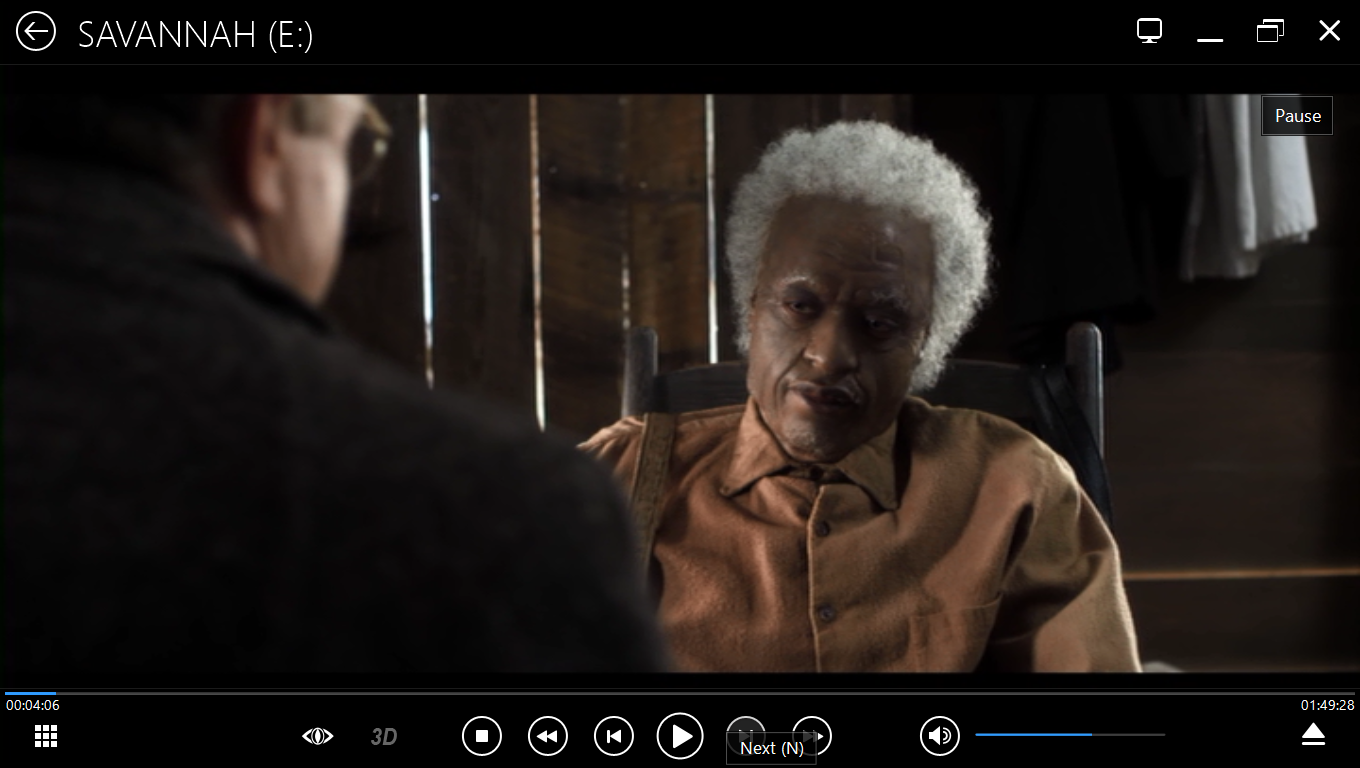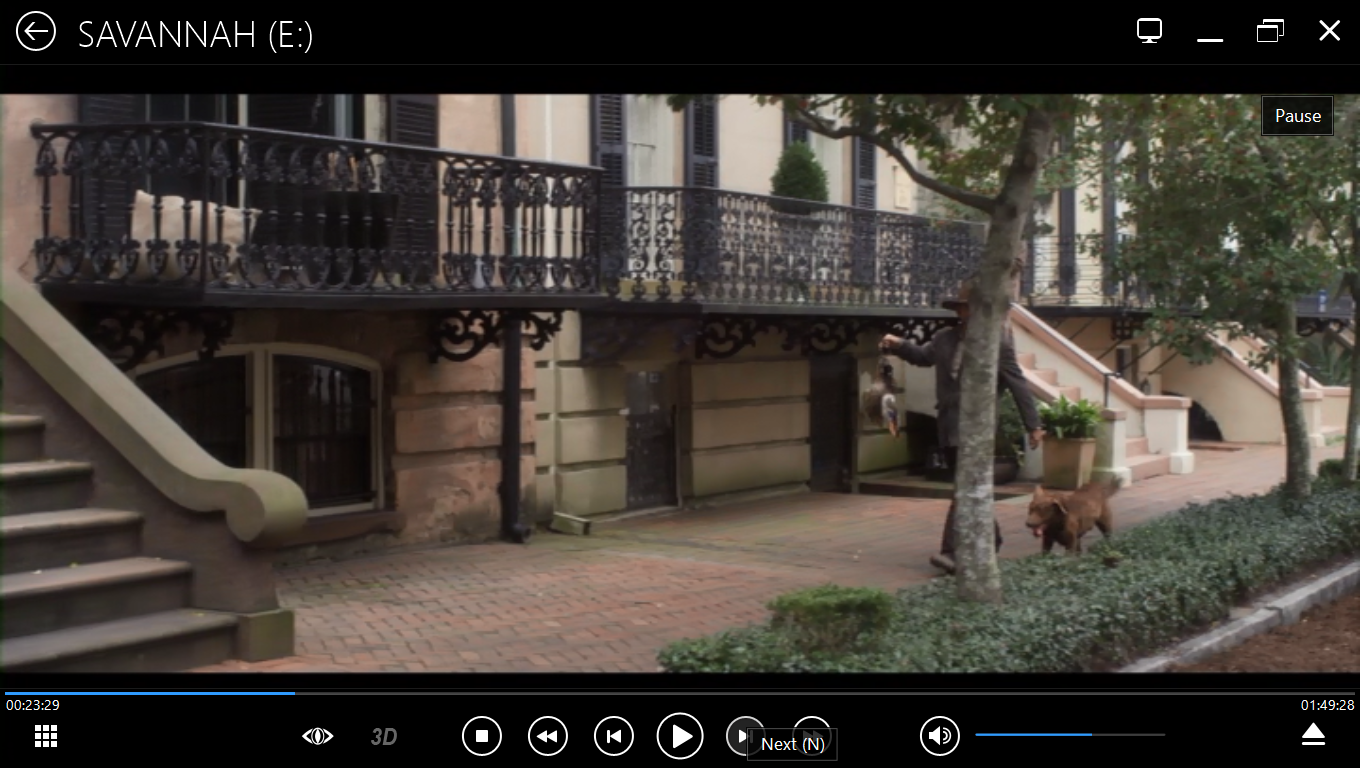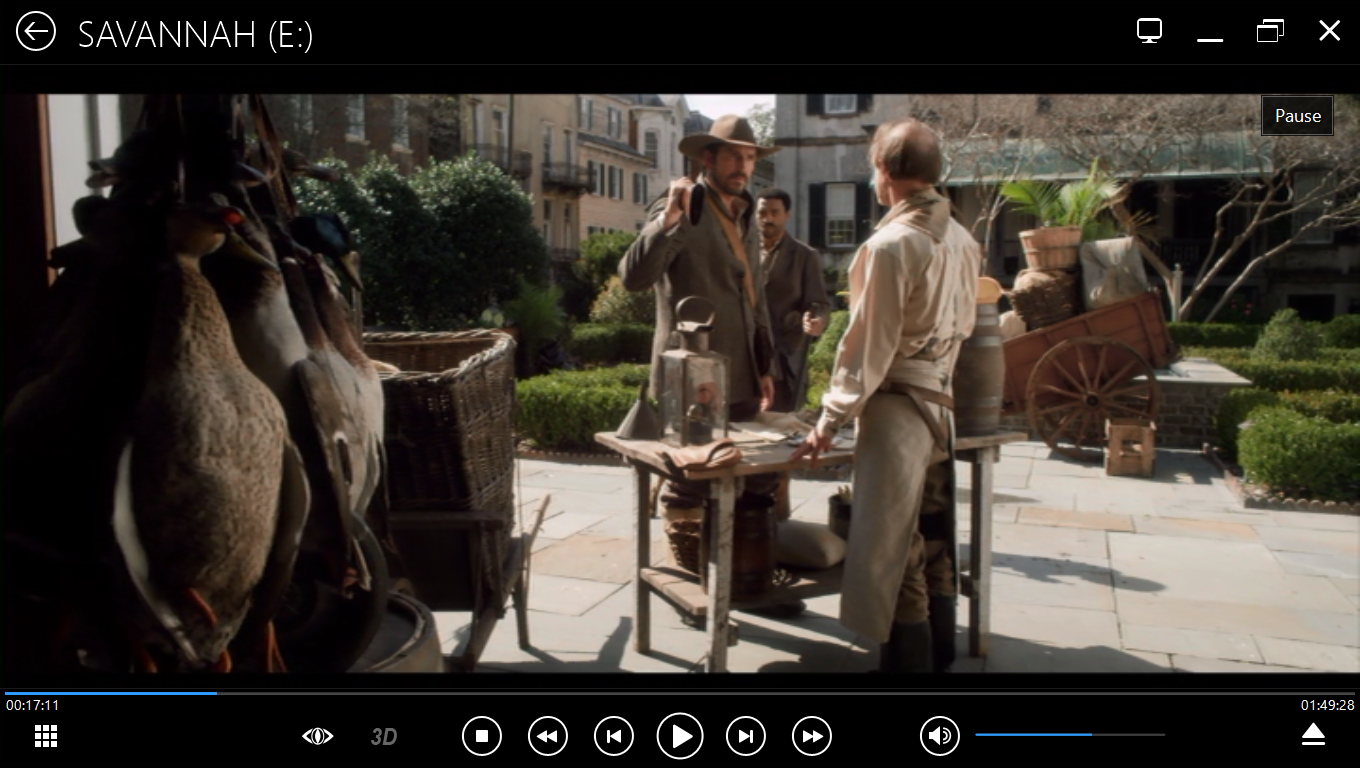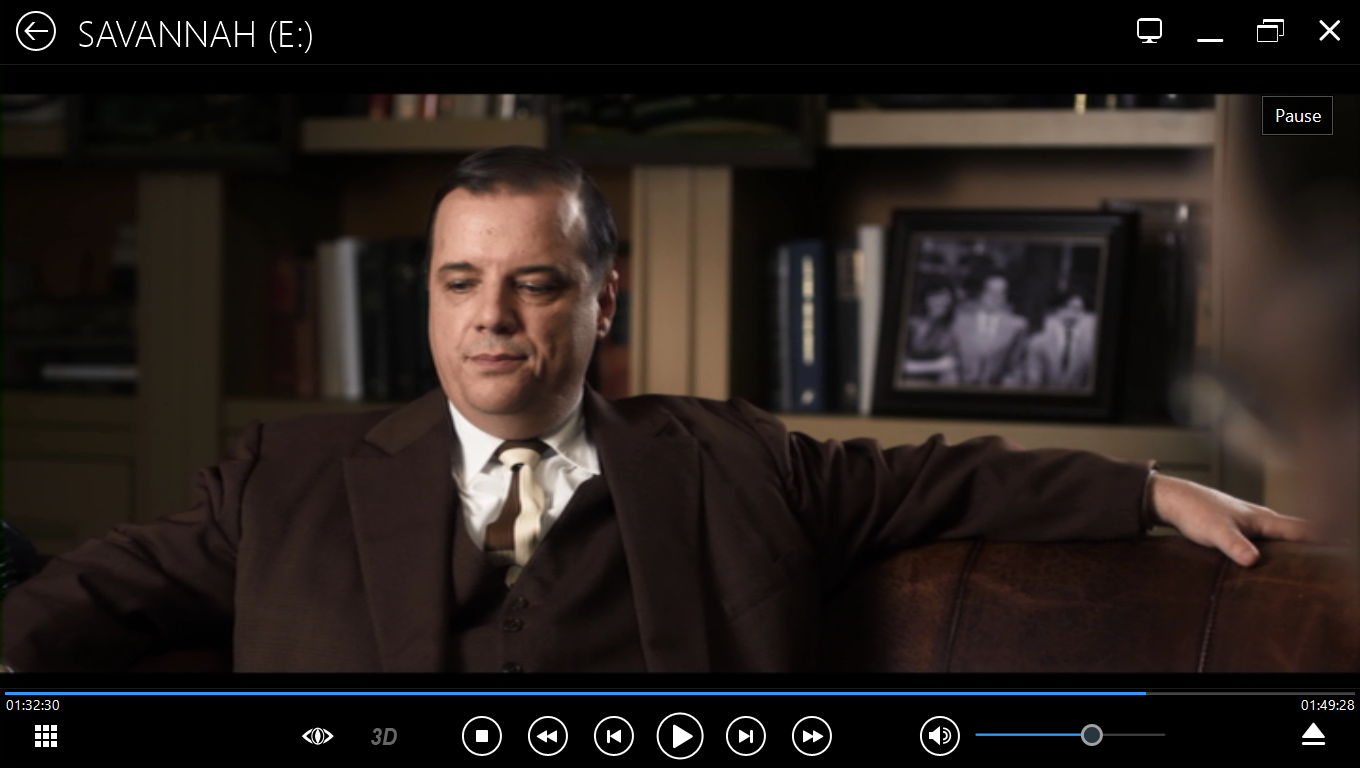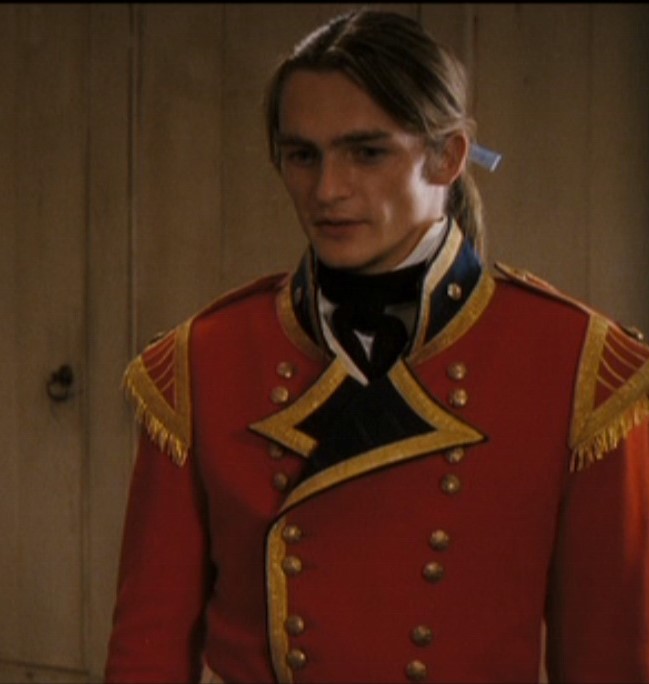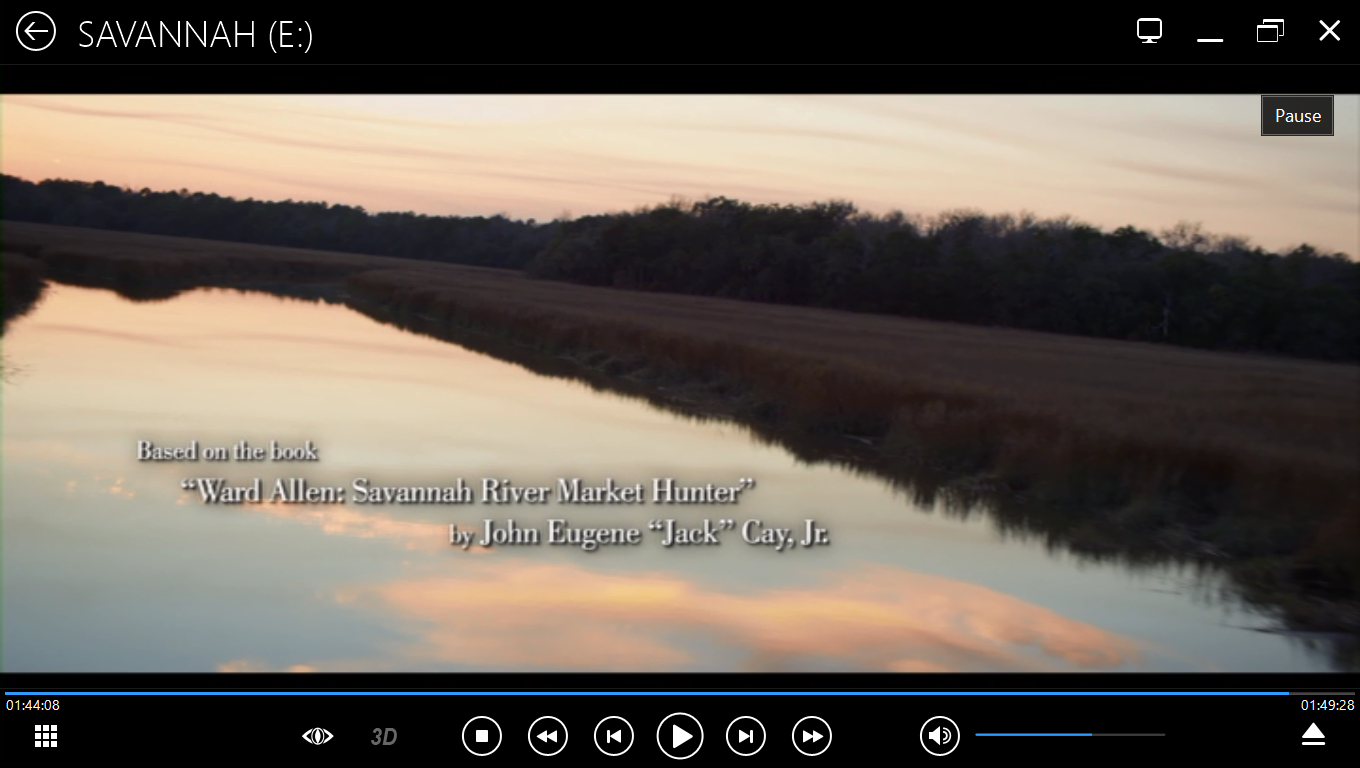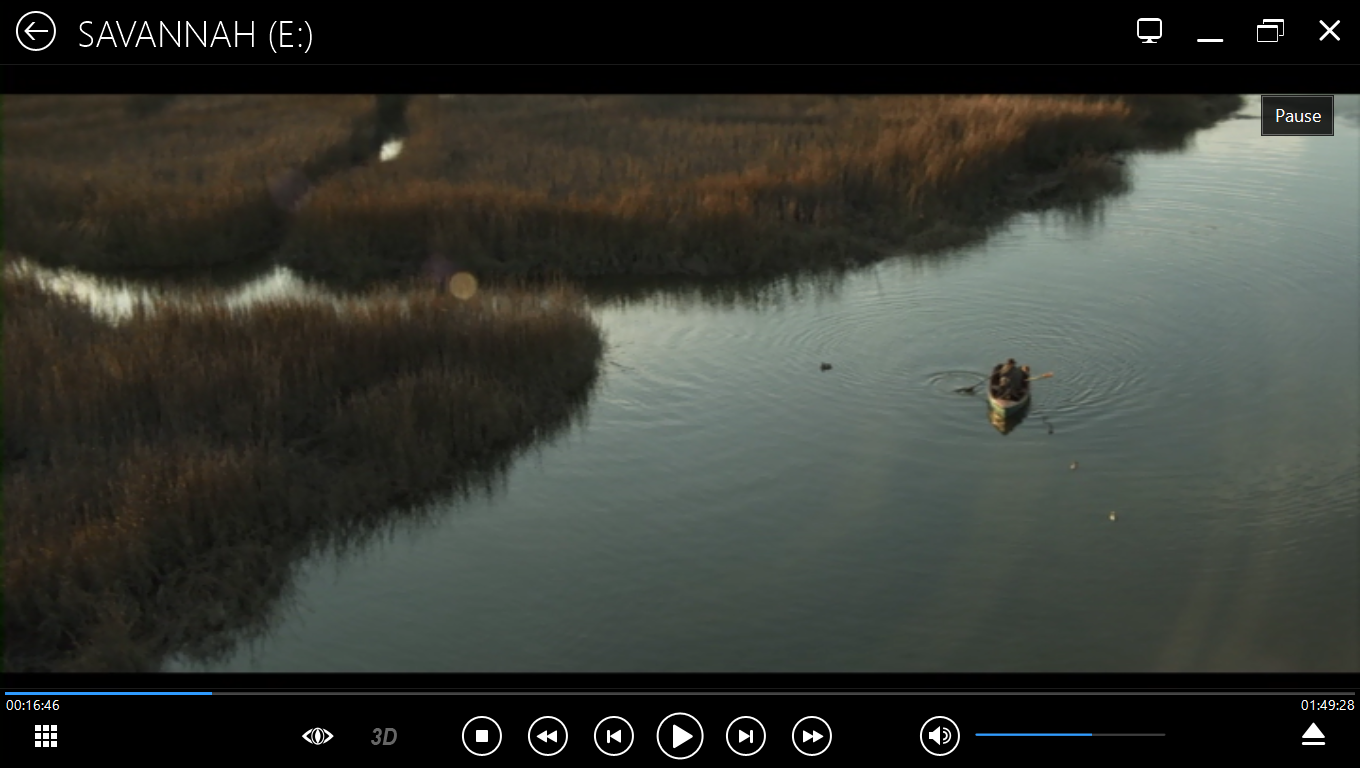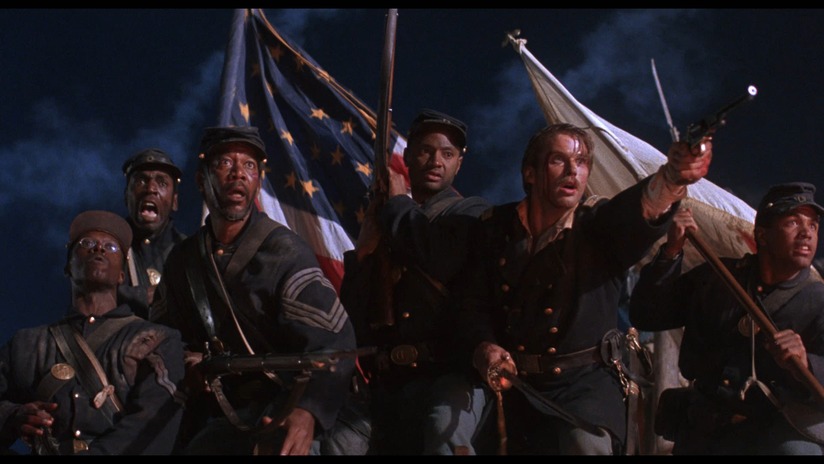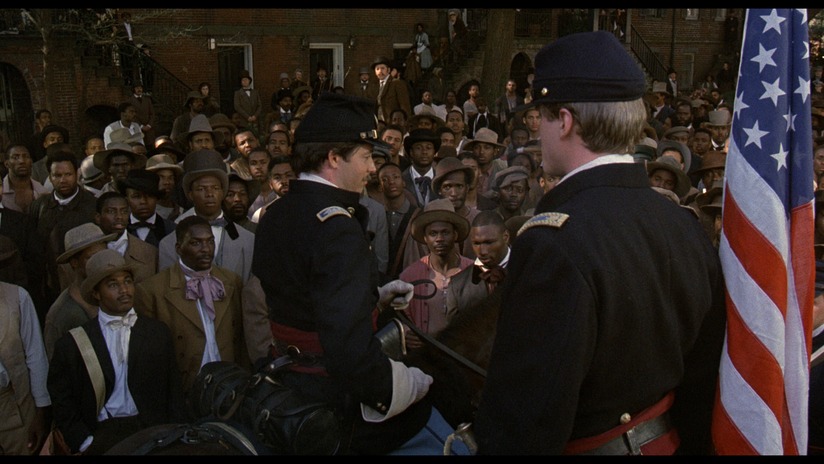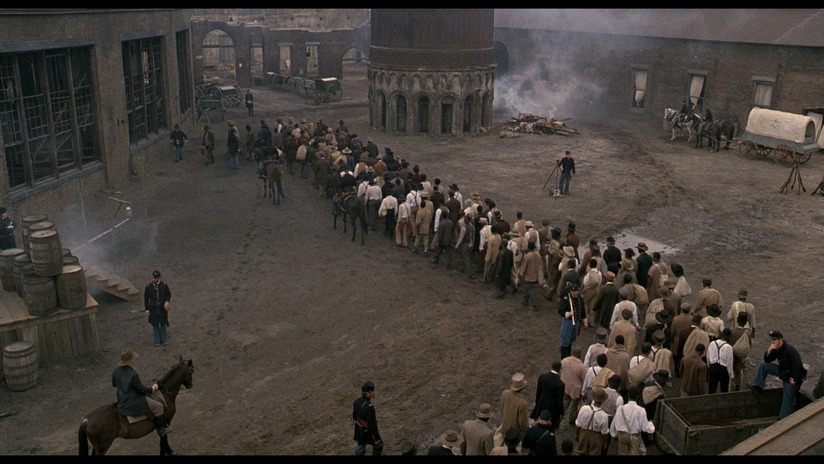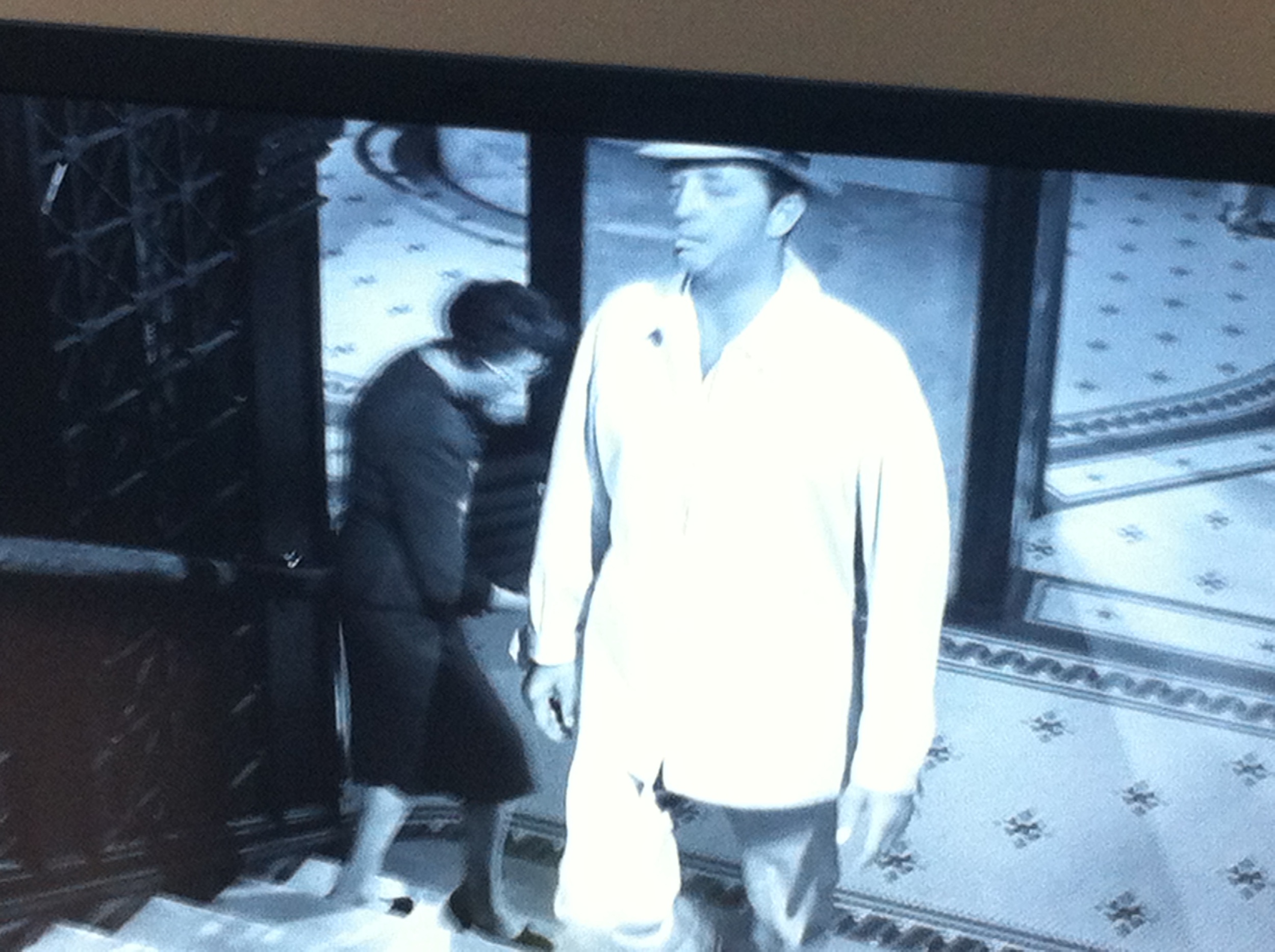The Conspirator was the second major project to film in Savannah after the Georgia legislature did the first useful thing it's done in years and set up a highly competitive set of incentives for filmmakers to shoot in this state. Right before The Conspirator came the Miley Cyrus movie The Last Song. (Yeah, I'll have to watch that one day. Don't rush me.) Those two movies were preceded by a decade-long stretch of nothing after The Legend of Bagger Vance wrapped up in 2000. (Guess I'll have to watch that one someday too. Ugh, golf movies.) The surrounding states, especially the Carolinas and Alabama out competed Georgia for project after project. But as soon as the legislature passed those incentives, holy moly! It was like magic! I am not even kidding. Touchstone Pictures immediately bailed out of North Carolina to film The Last Song in Georgia and The American Film Company was right on their heels late in the summer with The Conspirator, both of them high-profile feature films.
Now, the presence of Miley Cyrus on Tybee Island was exciting, I'm sure, for certain demographics. But the non-teeny-bopper inhabitants of Savannah didn't have much to fangirl about until friggin' ROBERT REDFORD showed up to direct The Conspirator! So, there was a little something for everyone that summer.
Redford's movie is about a woman named Mary Surratt. She owned the boarding house where John Wilkes Boothe and his friends plotted the assassination of Abraham Lincoln. She was hanged as a conspirator in the murder and was the first woman ever executed by the US government. Not the kind of pioneer she ever wanted to be, I'm sure. The movie is focused on the events of her trial and the emotional tribulations of her appointed attorney. He is at first reluctant to defend her, then increasingly doubtful about his government's commitment to true justice when it becomes apparent every bureaucrat around him wants to railroad Surratt into a guilty verdict for the sake of national closure, whether she actually knew what was going on in her boarding house or not.
The Conspirator was the inaugural project of a new studio called The American Film Company, whose mission is to depict true events in American history with complete accuracy. Have you ever wished you could just watch a movie instead of reading the book? Well, someone finally heard your cries. Despite being quite a small scale project with a tight budget, the movie attracted an impressive assembly of talent. Go look at the IMDB page- the cast is nothing but A-listers. Robin Wright played Surratt. James McAvoy played her lawyer Frederick Aiken. True, this is before those X-Men movies shot him into the stratosphere of superstardom, but he had already done some high-profile stuff. Kevin Kline is there too as the ever-so-slightly villainous Edwin Stanton, Secretary of War. There are even some cult favorites in the cast. Stephen Root is in this movie, for God's sake! Stephen Root! I can't remember why, but who cares? It's Stephen Root!
Now, the story takes place in Washington D.C. in 1865. As we all know, modern day D.C. bears almost no resemblance to 1865 D.C. So, when you need an authentic looking mid-to-late 19th century city that offers a variety of public and private architecture and access to interiors as well, who you gonna call? Savannah, Georgia, of course. Let's take a look at some of the local attractions standing in for D.C., shall we?
First up, and repeatedly throughout the movie, we have the Harper-Fowlkes House:
You'll see this building a lot in the movie. It serves as The Century Club, the place where the Union soldiers and the lawyers hang out all the time for drinking and joking and impressing the ladies. It's a house museum in actuality, built as a private home in the 1840s. It was rescued from decay and restored by a woman named Alida Harper-Fowlkes. She was doing the historic preservation thing in this town way before it was cool, back in the 1920s. As an aside, this house also appears momentarily at the end of the way-more-action-packed Lincoln movie called Abraham Lincoln vs. Zombies. Don't worry. I'll get to that one eventually. Also, is America over its Abraham Lincoln phase now? I mean, it was just nonstop Lincoln for a few years there. Can we move on to, say, Benjamin Franklin? His biopic would basically be a porno with some lightning, a stove, and a pair of bifocals thrown in. Not nearly the kind of downer Lincoln's biography is.
This next exterior is the Owens-Thomas House:
This is where a couple of Boothe's co-conspirators attempt to kill Secretary of State William Seward. They shot those bits inside the house too, but I neglected to take a screencap of that for some reason. Maybe because it was kind of dark and there wasn't a lot to see. The Owens-Thomas House is my favorite house museum and I highly recommend touring it if you ever visit Savannah. It was the first real mansion ever built here, it's beautiful, and the tours are very high quality.
Next up, we see Lincoln's funeral train pulling into a station full of mourners. The station in question is the Roundhouse Rail Road Museum, which also served as the backdrop for much of the movie Glory. I'm not sure, but the filmmakers might have used the steam engine that already resides there. The museum does periodic train rides with it.
Below is the U.S. Customs House, which sits on Bay Street at the corner of Bull. This building turns up in the movie as often as the Harper-Fowlkes House because it's where the lawyers do their serious lawyering. There is CGI D.C. just over the roof. Seeing an incomplete George Washington monument makes me giggle, for some reason.
Here is a better view of the building as a whole:
This is a shot of James McAvoy and Tom Wilkinson walking down the Customs House steps. The two of them have many important, philosophical, and very grown-up conversations about ethics and stuff inside and around the Customs House.
The most significant amount of filming did not take place in the Historic District, however. A lot of plot and character interaction happens when Aiken, the lawyer, goes to visit Surratt. She is, naturally, being kept in prison at a fort in D.C. Our own Fort Pulaski served the purpose very nicely.
For the life of me, I cannot remember now if the crew built this military courtroom inside the fort or if they shot it elsewhere or on a sound stage. I've had this post on the back burner for a very long time and it's been ages since I watched the movie and listened to the commentary.
Another "who" to appear in the "who's who" cast is Norman Reedus right here. He has a small role as another one of the conspirators. Much like James McAvoy, he made this movie just before he achieved serious fame as fan-favorite character Daryl on AMC's The Walking Dead (which is also filmed in Georgia, in case you didn't know). And then it was the year after this or maybe in 2012, he was a special guest at the Savannah Film Festival.
Another view of Fort Pulaski just because, uh, it looks nice.
This scene and the exterior of Mary Surratt's boarding house gave me fits because I could not work out which row of houses that was. It was familiar, oh, so familiar, but recognition only teased at the edge of my brain. I actually stalked around a few squares on Google Street View before I thought to myself, "Wait a minute. What's a part of the Historic District I hardly ever go to and so am unlikely to recognize? Must be... Chatham Square! Quick, Robin, to the Batcave!" And so it was. The houses you see below and the next picture beneath them (of the exterior of Surratt's house) are located on the northwest corner of Chatham Square, southernmost square on Barnard Street. I almost never go anywhere near Chatham Square unless I'm meeting people at The Savannah B&B for a tour. There's nothing wrong with Chatham. It's as pretty as any other square. I'm just never over there, for some reason.
Please note that even Robert Redford cannot improve on the ancient tradition of throwing truckloads of dirt over the asphalt to make the streets look old-timey.
Here is a beautiful sunrise shot of James McAvoy riding up the path to Fort Pulaski. I have loved Pulaski since I was a little kid and my dad would take me there and teach me about rifled cannon and the Civil War and stuff. I cannot recall anymore what I thought of all these things when I was, what, six? I think more than anything I just liked that my dad was taking me places and showing me things. That and, if we went all the way out to Fort Pulaski, odds were good we would go the next couple miles down the road to the beach! I strongly recommend a visit to Fort Pulaski, especially if you have an interest in Civil War history.
This view shows you a little of Cockspur Island around the fort. Draining the island was the first job handed to young Robert E. Lee right after he graduated from West Point. Again, we have CGI D.C. in the background. If this movie were being made in 1938 it would have been a matte painting.
One of the coolest things about Pulaski when you're a little kid is that it has a moat. An honest to God moat like an actual medieval castle! With alligators in it! And there's a drawbridge with a spiky portcullis and everything! That was seriously thrilling for me when I was little. (Who am I kidding? It still fills my nerdy self with glee.)
Ok, so this guy you see in the center with the epic muttonchops? He lives around here and one day I'll learn his name, I'm sure. But he gets to be involved in every historic everything because he looks exactly right. Every reenactment, every living history presentation, every historical drama. He never shaves off those muttonchops. They are his livelihood. Until I learn his name, I shall simply call him Muttonchops.
Ah, here we see the dining room of the Harper-Fowlkes House. It was built at a time when all the rich folk paid heaps of money for artisans to make their pine baseboards look like marble and their plaster walls look like wood paneling. Not because they couldn't afford actual marble or paneling, but because it was so much more expensive and luxurious to have someone fake those things. Artists hand painted faux wood grain over every inch of this dining room back in the 19th century. It doesn't show up well at all in this picture, and that's too bad. But it's one of the most impressive things about the house, if you ever get a chance to tour it. The chandelier you see at the top of the picture is original to the house, one of many details Alida Harper-Fowlkes rescued and restored. The house's old fixtures were designed for gas, but were long ago updated for electricity.
The reason the room might seem curiously dark is, either because of his own sense of aesthetics or The American Film Company's commitment to verisimilitude, Robert Redford shot the movie pretty much entirely using natural light. So, those candles all over the place? Not just for show. Sunlight, candles, and lanterns are what they had to work with most of the time. Probably drove the director of photography (Newton Thomas Sigel) insane.
Below is an interior shot of the U.S. Customs house. Pictures of the Customs House usually only ever depict two parts of it: either the imposing granite facade or this elegant main staircase inside.
I'm pretty sure Redford shot the party scene inside the Andrew Low House. It's been a long time since I toured it, so it's not that familiar to me. However, I remember a friend of mine, an old lady named Pat, talking about the crew being there and shooting something and leaving a scratch on a wall or something. Pat is a member of the Colonial Dames of America and they own the house. It's their Georgia state headquarters.
I snuck this little screen grab in here because the distinctive oriel window of the Green-Meldrim House is visible behind James McAvoy during this very brief scene, the house's only appearance in the movie as far as I know. I don't know of the Green-Meldrim showing up in any other movies at all- a wasted opportunity if you ask me. It's an extremely ornate Gothic Revival mansion, just crying out to be the setting for somebody's old-fashioned haunted house movie.
Here's a nighttime photograph of the exterior I took myself a couple years ago. Look at it! Doesn't it look like Vincent Price lives there? Doesn't it look beautiful and mysterious and a little bit menacing all at the same time, like you can't resist coming close even though you're not certain you'll ever make it out again? I've toured the house; it looks like that on the inside too. A silent man with scissors for hands would seem as if he belonged there.
The following shot is one of the ramps leading down to River Street, though I'll be damned if I can work out precisely which one. But I really put it here so I could talk about the look of the movie. This scene reminds me very much of those few silent minutes in Mary Poppins when Mr. Banks knows his career at the bank is ruined and he walks through dark, still London streets to confront his fate. This looks exactly like that. Many good movies have been made in Savannah, perhaps even a handful of great movies, but I haven't seen one yet that I enjoyed looking at as much as The Conspirator. Despite its staunch commitment to historical accuracy, or maybe as a counterbalance to the weighty and sometimes dry material, the movie looks like a fairytale. It's beautiful and I love it. I don't know what process Newton Thomas Sigel used, but bless his little heart for it. Everything is just a little bit hazy and a little bit soft. Like a memory.
This here is just a tiny bit of space between the Green-Meldrim House and St. John's Episcopal Church. McAvoy's character strolls along here with Mary Surratt's priest. The church owns the Green-Meldrim and connected the two buildings with this Gothic-arch walkway years ago.
My last location image is of that very same block of houses that appeared in the movie Savannah, which I have previously written about. James McAvoy comes flying up the stairs and banging on the door to beg the judge for a stay on Mary Surratt's execution. The judge, by the way, is played John Cullum. I have a soft spot for him and it pleases me to see him here. I don't know what it is about this little stretch of Perry Street between Bull and Whitaker that every movie maker is so in love with, but there's something about it that really works.
One of the Georgia legislature's stipulations for movies that accept the tax credits here is they must include our colorful peach logo in the end credits. So, be on the lookout for this little guy any time you head to the theater because Georgia is on fire lately. Everybody wants a piece of this sweet, fuzzy, Peach State action. They are making movies here faster than I can write about them.
I stuck this in just so you'd have a complete list of all the locations used in the film.
So there you have The Conspirator. History enthusiasts will probably love it and cheer The American Film Company's refusal to clutter up the narrative with unnecessary fictionalized drama. For that same reason, the movie may not appeal to a broader audience. Movies typically follow certain formulas because the truth is those formulas have proven again and again that they can keep even the least attentive audience members engaged. What I'm saying is The Conspirator is for people who can handle a serious and mature movie going experience, but not so much for the casual viewer who just wants to be entertained. Despite its shortcomings, I count it among the better quality movies to have been filmed here.


